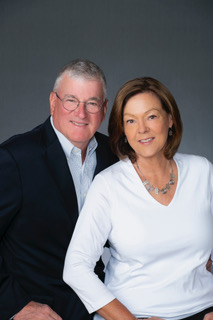|
Curt Watson grew up only a few miles away from the University of Maryland (UMD), which became his alma mater. His mechanical engineering degree launched a professional journey that has spanned the United States, culminating in executive positions at companies in Colorado and Texas.
Prior to his retirement in 2017, he was CEO of the Infinity Group, which is part of a United Kingdom-based engineering and consulting firm, the Wood Group. He previously served as president of the Wood Group’s process plants and industrial business unit, following a role as senior vice president for global business development and marketing.
Prior jobs with companies such as The Washington Group, Conoco, and Union Carbide took him to states as widely separated as New York and Louisiana.
And it all started in 1972, with Watson’s decision to enroll in college down the road from his hometown of Bladensburg.
“I was the first in my family to get a college degree,” he said. “I knew I needed college to make something of myself.” To support himself while in school, he worked at the Safeway in nearby New Carrollton.
“I carried a union card,” he recalls with pride.
As Watson surveyed his career options, he decided he did not want to follow in the footsteps of several family members and work for the federal government. Instead, he set his sights on industry. He wanted, as he puts it, “to see what I built and be able to talk about what I built”—an aspiration that he felt would be constrained by the more restrictive federal environment.
He also wanted to get out of town and see other parts of the United States.
His first job after graduation was with Union Carbide, in Tonawanda, New York, which hired him to design water treatment technologies that involved the extraction and use of pure oxygen.

Curt Watson ‘76 and his wife, Melissa Watson '81, enjoy travel and volunteering at their church.
He then became a project manager for Conoco Chemicals, which valued mechanical engineers because of the field’s wide range of study. Complementing the company’s chemical engineers, mechanical engineers like Watson executed electrical, civil and mechanical engineering design.
He stayed with the company for seventeen years, moving around the country to take up a series of assignments. And then, launching a new phase in his career, he used his engineering background to move into roles at a series of companies—roles in consulting, business development, sales, and ultimately the executive suite.
Today, he and his wife, Melissa, who earned her Masters in computer science at UMD in 1981, are enjoying retirement—“the best and longest job I have ever had,” as he puts it— including grandchildren, travel, community involvement, and volunteering at their church. He also has remained actively involved with UMD, contributing generous donations in support of the Department of Mechanical Engineering and UMD students.
“While UMD is a strong research university, it also has an extremely important role in terms of educating the workforce,” he said. “A college education offers high school graduates, if they’re willing to put in the work, a great foundation for getting into industry and contributing to the economy.
“My own career testifies to that. And it’s something I want to support,” he said.”
October 29, 2025
|

